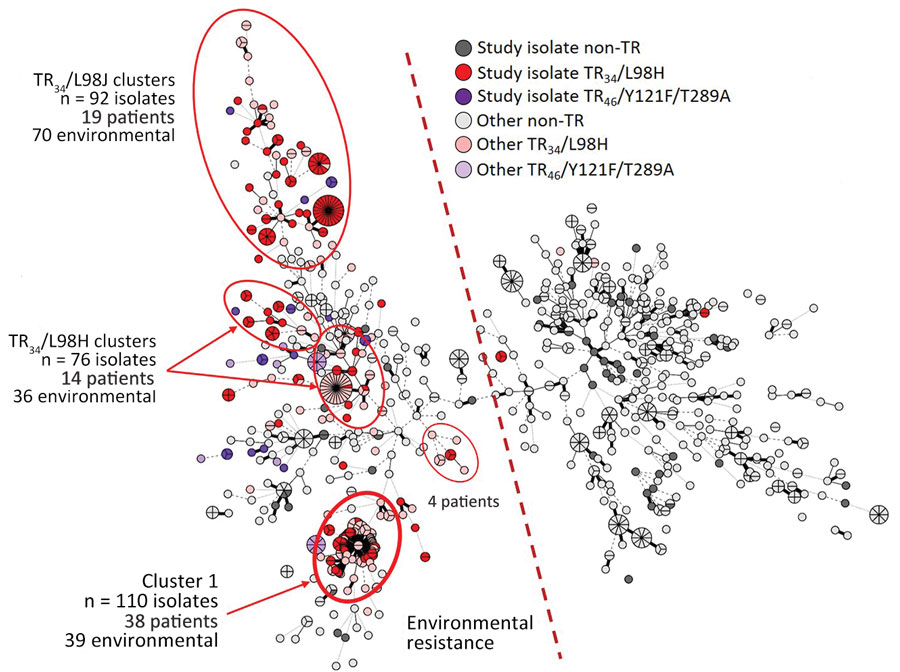Volume 30, Number 8—August 2024
Research
Environmental Hot Spots and Resistance-Associated Application Practices for Azole-Resistant Aspergillus fumigatus, Denmark, 2020–2023
Figure 1

Figure 1. Minimum spanning tree of 232 Aspergillus fumigatus genotyped study isolates including 741 Denmark background isolates (627 isolates from 326 patients and 114 isolates from the environment) for study of environmental hot spots and resistance-related application practices for azole-resistant A. fumigatus, Denmark, 2020–2022. Colors emphasize isolates with environmental azole resistance mechanisms, TR34/L98H (red) or TR46/Y121F/T289A (purple). With a few exceptions, all TR34/L98H and TR46/Y121F/T289A reside on the left side of the tree. Moreover, several TR34/L98H clusters include patient and environmental isolates, of which cluster 1 displays almost identical genotypes.
Page created: June 14, 2024
Page updated: July 20, 2024
Page reviewed: July 20, 2024
The conclusions, findings, and opinions expressed by authors contributing to this journal do not necessarily reflect the official position of the U.S. Department of Health and Human Services, the Public Health Service, the Centers for Disease Control and Prevention, or the authors' affiliated institutions. Use of trade names is for identification only and does not imply endorsement by any of the groups named above.